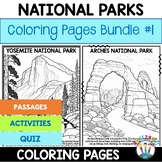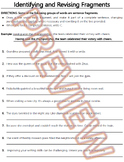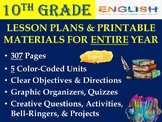142 results
10th grade physics study guides for Microsoft Word
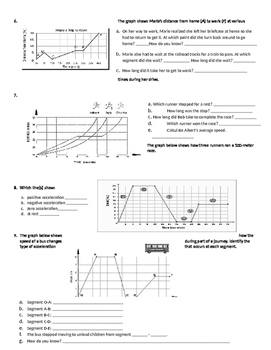
Interpreting Motion Graphs
This worksheet provides students practice interpreting distance-time and velocity(speed)-time graphs. Students have to determine an objects motion, acceleration and calculate speed. Can be used as a mini-lesson, practice and/or as an assessment.
Subjects:
Grades:
5th - 10th
Types:
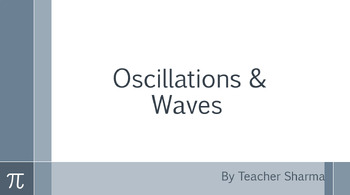
Oscillations and waves bundle
This bundle is a complete introductory lesson on Oscillations and Waves. It has a powerpoint with some clean animations and videos to help visualize the concepts, guided notes and worksheets.The following topics are covered in simple language to help students grasp the complicated concepts:›Periodic motion›Equilibrium and extreme positions›Forced oscillations›Restoring force›SHM›Displacement›Hooke’s law›Simple Pendulum›Energies associated with oscillations›Acceleration at different positions›Amp
Subjects:
Grades:
9th - 12th

AP Physics 1 Exam Overview with FRQ Practice
This is a great tool to prepare and review for the AP Physics 1 Exam. There is a one-pager that described the exam, breaks down the multiple choice and FRQ sections, and provides helpful tips about each section. It then describes the different tasks verbs used in the FRQs and helpful hints on how to answer each task verb. Finally, there are FRQs for each task verb for the students to complete in order to practice answering these types of questions. There is a key for the practice FRQs as well.
Grades:
9th - 12th
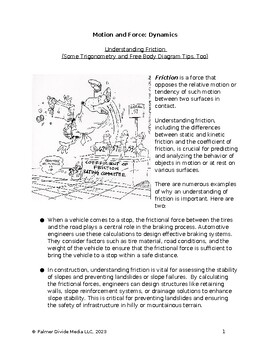
Motion and Forces - Dynamics: Understanding Friction
Students in high school physics courses often have initial challenges in understanding how friction works and how to calculate the magnitude of the friction force, the types of friction forces, and the role of the friction coefficient. This handout provides a succinct overview. It also includes an overview of how to use trigonometry to solve physics problems where the object is on an incline and tips on how to make free body diagrams.
Subjects:
Grades:
9th - 12th, Higher Education
Types:
NGSS:
HS-PS2-1

Concept Compare: Kepler's (and Newton's) Laws of Planetary Motion for Orbits
This concept comparison is between: Kepler's Laws of Planetary Motion, and how they relate to Newton's Laws of Motion and the Law of Universal Gravitation. Bring a calculator!The Concept Comparison Routine is used help compare and contrast key concepts. Specifically, students use like and unlike characteristics and categories shared and not shared by two or more concepts to better understand the overall concept. Students taught using the Content Enhancement routines earned higher total test scor
Subjects:
Grades:
7th - 12th, Higher Education
NGSS:
HS-ESS1-4
Also included in: StayGiant Earth Science Bundle: Astronomy (space exploration)

Concept Compare: Why Does the Sun Shine? Thermonuclear Fusion! (p-p and CNO)
This Concept Comparison of Thermonuclear Fusion contrasts proton-proton (p-p) chain reactions, and the "cold" carbon-nitrogen-oxygen (CNO) cycles. Help Ss communicate scientific ideas about the way stars produce elements over their life cycle. Emphasis is on the way nucleosynthesis, and therefore the different elements created, varies as a function of the mass of a star and the stage of its lifetime. As cosmologist Carl Sagan famously said, “We are made of star stuff.” And we literally are! We a
Subjects:
Grades:
8th - 12th, Higher Education
NGSS:
HS-PS1-8
, HS-ESS1-3
, HS-ESS1-1
Also included in: StayGiant Earth Science Bundle: Astronomy (space exploration)

Newton's Laws of Motion Review Worksheet
The purpose of this review sheet is to serve as a study guide for students as they prepare to be assessed on Newton's 3 laws of motion.
Subjects:
Grades:
5th - 10th
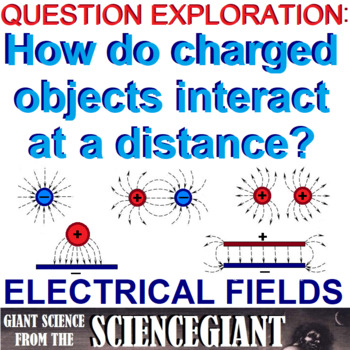
Question Explore: Electric Field Strength and How Charged Objects Interact
How do electrically charged object interact at a distance? This Question Exploration explains to Ss how an electric field exists around any charged unit. The field produces forces on other charged objects. This question exploration helps provide a picture of the electric field strength, and how charged objects interact at a distance.Question Exploration Routines are an instructional method that teachers can use to help a diverse student population understand a body of content information by care
Subjects:
Grades:
9th - 12th, Higher Education
NGSS:
MS-PS2-3
, HS-PS2-4
, MS-PS2-5
Also included in: StayGiant Physics Bundle: Electricity

EXPERIMENT BOOKLET CONSERVATION OF MOMENTUM
This assessment booklet covers the topic of conservation of momentum. An experiment is explained and questions asked regarding the experimental procedure and the theory behind it.The assessment is allocated forty marks spread over two sections.The questions vary in ability level and style.A full mark scheme is included.
Subjects:
Grades:
9th - 11th
CCSS:
NGSS:
HS-PS2-2

Concept Comparison: Temperature vs Thermal Energy
This Concept Comparison contrasts thermal energy and temperature as they relate to heat transfer. It builds from middle school science concepts of mechanical energy, and an introduces specific heat capacity and the laws of thermodynamics.The Concept Comparison Routine is used help compare and contrast key concepts. Specifically, students use like and unlike characteristics and categories shared and not shared by two or more concepts to better understand the overall concept. Students taught using
Subjects:
Grades:
7th - 12th, Higher Education
NGSS:
HS-PS1-4
, MS-PS1-4
, HS-PS1-5
, MS-PS1-6
Also included in: StayGiant Physics Bundle: Thermal Energy
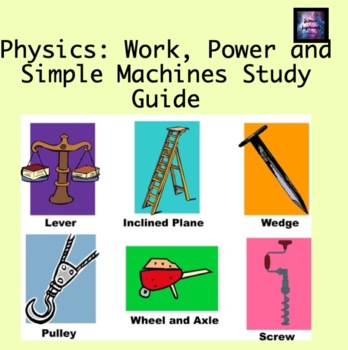
Work, Power, and Simple Machines Study Guide
This study guide reviews concepts that were studied in the unit on work, power and simple machines. The study guide is also correlated to the test on this unit.
Subjects:
Grades:
8th - 12th
Types:
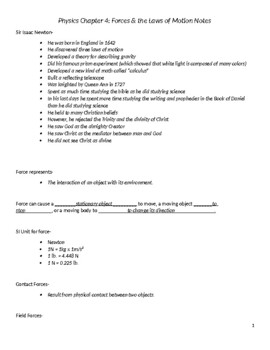
Physics Guided Notes- Force, Friction, and Newtons Laws
These guided notes are a great way to discuss force, friction, and Newtons Laws. I have embedded examples and practice problems throughout. I have also included lab ideas where they are applicable. These notes are based on the textbook "Holt Physics". An answer key is provided, so the use of a textbook is not necessary.I use these guided notes to replace boring lectures. They turn covering new material into more of a discussion than a one-way conversation.Topics covered include--Sir Isaac New
Subjects:
Grades:
9th - 12th
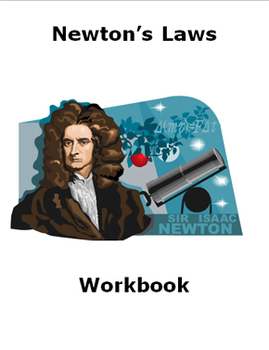
Newton's Laws Workbook
A brief introduction to Newton and his basic laws of motion.
Topics Covered:
-Galileo
-Newton
-Forces
-First Law
-Inertia
-Second Law
-Friction
-Third Law
-How to draw forces instructional (1 page)
-Quiz (11 questions)
-Lab Activity
-Answer Key for Quiz and Lab
Thanks for taking the time to stop by my store!
Mrs. Degs
Teaching Science Well
Blog: http://teachingsciencewell.wordpress.com/
Facebook: https://www.facebook.com/TeachingScienceWell
TPT: http://www.teacherspayteachers.com/Store/Teac
Subjects:
Grades:
3rd - 10th

Question Exploration and Concept Compare Frame: The Ear and Hearing
Listen up! This question exploration helps Ss answer How do you hear? It explains the physics of the sense of hearing, ear anatomy and acoustics for physical science students. This product also includes a concept comparison frame of the decibel scale, two classroom activities to try with students. First is a Line-Up, to get students out of their seats and review the main idea answer by making a human model of the outer and inner ear. The second activity is a fill-in-the-blank worksheet on ear an
Grades:
8th - 12th, Adult Education
NGSS:
MS-PS4-1
, MS-PS4-2
, HS-PS4-1
Also included in: StayGiant Physics Bundle: Waves and Sound
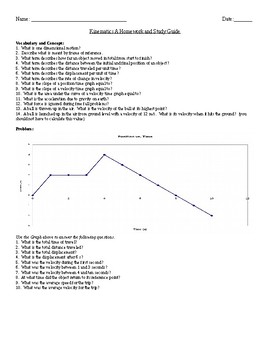
Kinematics 1-D Motion Study Guide
This the study guide and homework that I give my students to help them prepare for their first unit test. There are questions on: Motion Graphs (position vs. time, velocity vs. time), speed, velocity, distance, displacement, and acceleration.An answer key is provided. A total of 35 review questions.
Subjects:
Grades:
8th - 12th
Types:
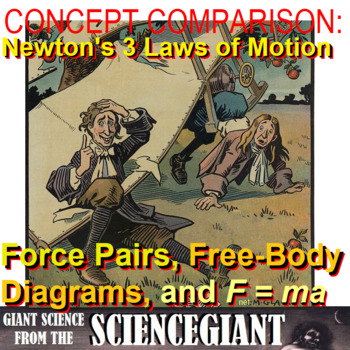
Concept Compare: Newton's Laws of Motion, Force Pairs, and Free-Body Diagrams
This Concept Comparison Frame explores Newton's Laws of Motions and introduces dynamics of unbalanced forces, including the Law of Inertia, F=ma, and action-reaction pairs using many models including free-body diagram and algebra equations.The Concept Comparison Routine is used help compare and contrast key concepts. Specifically, students use like and unlike characteristics and categories shared and not shared by two or more concepts to better understand the overall concept. Students taught usi
Subjects:
Grades:
8th - 12th, Higher Education
NGSS:
MS-PS2-2
, HS-PS2-1
, MS-PS2-5
, MS-PS2-1
, HS-PS2-3
Also included in: StayGiant Physics Bundle: Dynamics
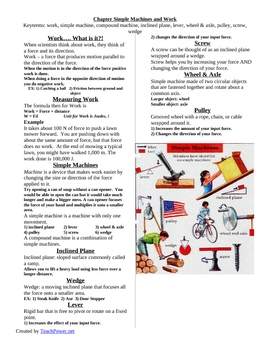
Simple Machines and Work
This is a ditto that provides quick notes in outline format for students as they follow along with the teacher in a separate PowerPoint presentation I also created for this lesson. You can preview this presentation, along with 140+ other Powerpoint presentations, that I have created and successfully use in my middle school science class on my teacher resource website (http://www.PickinPost.net). This ditto and presentation covers information on the various types of simple machines and how to cal
Subjects:
Grades:
5th - 12th
Types:
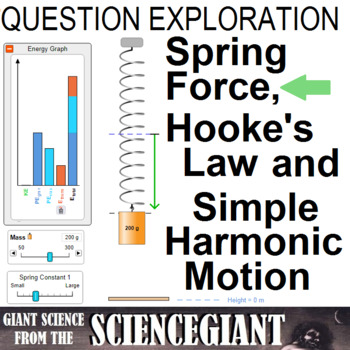
Question Exploration: Spring Force, Hooke's Law and Simple Harmonic Motion
This Question Exploration helps Ss answer the question: How does a spring scale work? Ss will identify conditions of simple harmonic motion and relate to Hooke's Law to find the spring force and spring constant. Ss will also examine the relationship between the amount a linear spring is stretched and the restoring force that acts to return the spring to its rest length. This concept is central to an understanding of elastic potential energy in mechanical systems and has implications in the study
Subjects:
Grades:
8th - 11th, Higher Education
NGSS:
HS-PS2-2
, HS-PS2-1
, HS-PS2-6
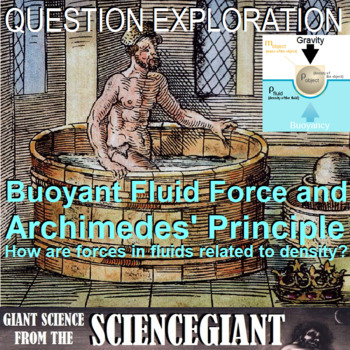
Question Exploration: What is Buoyancy and Archimedes Principle?
What is buoyant force? This Question Exploration helps students understand How are forces in fluids related to density, and explains what is Archimedes’ Principle?Question Exploration Routines are an instructional method that teachers can use to help a diverse student population understand a body of content information by carefully answering a critical question to arrive at a main idea answer. Students taught using Content Enhancement earned higher total test scores than did students taught usi
Subjects:
Grades:
9th - 12th, Higher Education
NGSS:
MS-PS2-4
, MS-PS2-2
, HS-PS2-1
Also included in: StayGiant Physics Bundle: Fluids and Hydrodynamics
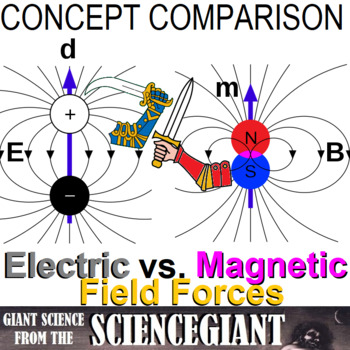
Concept Comparison: Electric Fields vs Magnetic Fields
Electric and magnetic fields are both components of an electromagnetic field. But is it just as simple as saying to Ss magnetic effect is caused by moving electric charges while an electric field is caused by stationary charges? Nope! This concept comparison helps Ss contrast Electric Fields (E) versus Magnetic Fields (B).Concept Comparison Routine is used help compare and contrast key concepts. Specifically, students use like and unlike characteristics and categories shared and not shared by t
Subjects:
Grades:
7th - 12th
Also included in: StayGiant Physics Bundle: Magnetism and Electromagnetism

Question Exploration: What is Static Electricity? What are Electric Charges?
What is static electricity? This Question Exploration helps Ss explains how objects become electrically charged, and contrasts conductors with insulators. Question Exploration Routines are an instructional method that teachers can use to help a diverse student population understand a body of content information by carefully answering a critical question to arrive at a main idea answer. Students taught using Content Enhancement earned higher total test scores than did students taught using the l
Subjects:
Grades:
8th - 12th
NGSS:
MS-PS3-2
, HS-PS3-1
, HS-PS3-5
Also included in: StayGiant Physics Bundle: Electricity
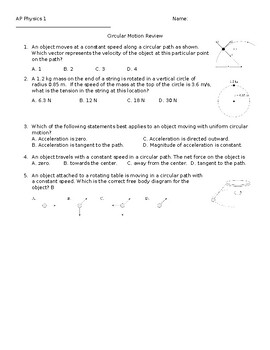
Circular Motion Review - AP Physics
This review covers the concept of circular motion at an AP Physics 1 level. The answer key can be found for FREE in my store under Circular Motion Review (ANSWER KEY).
Subjects:
Grades:
10th - 12th
Types:
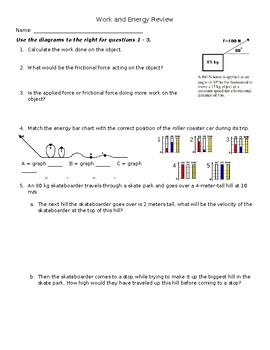
Work and Energy Review - AP Physics
This review covers the concepts of Work and Energy at an AP Physics 1 level. The answers are provided on the last page.
Subjects:
Grades:
10th - 12th
Types:
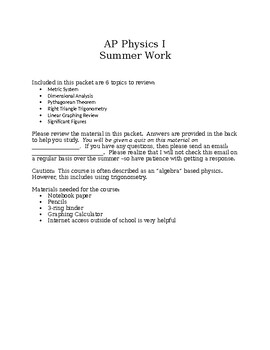
AP Physics 1 Summer Work
AP Physics 1 Summer Work includes the following topics: metric system, dimensional analysis, Pythagorean Theorem, right triangle trigonometry, linear graphing (interpret intercepts & slope, distance formula), and significant figures.Review of how to do it and practice problems for each topic. Answers included. Word document so you can edit the packet.
Subjects:
Grades:
10th - 12th, Higher Education, Adult Education
Types:
Showing 1-24 of 142 results




